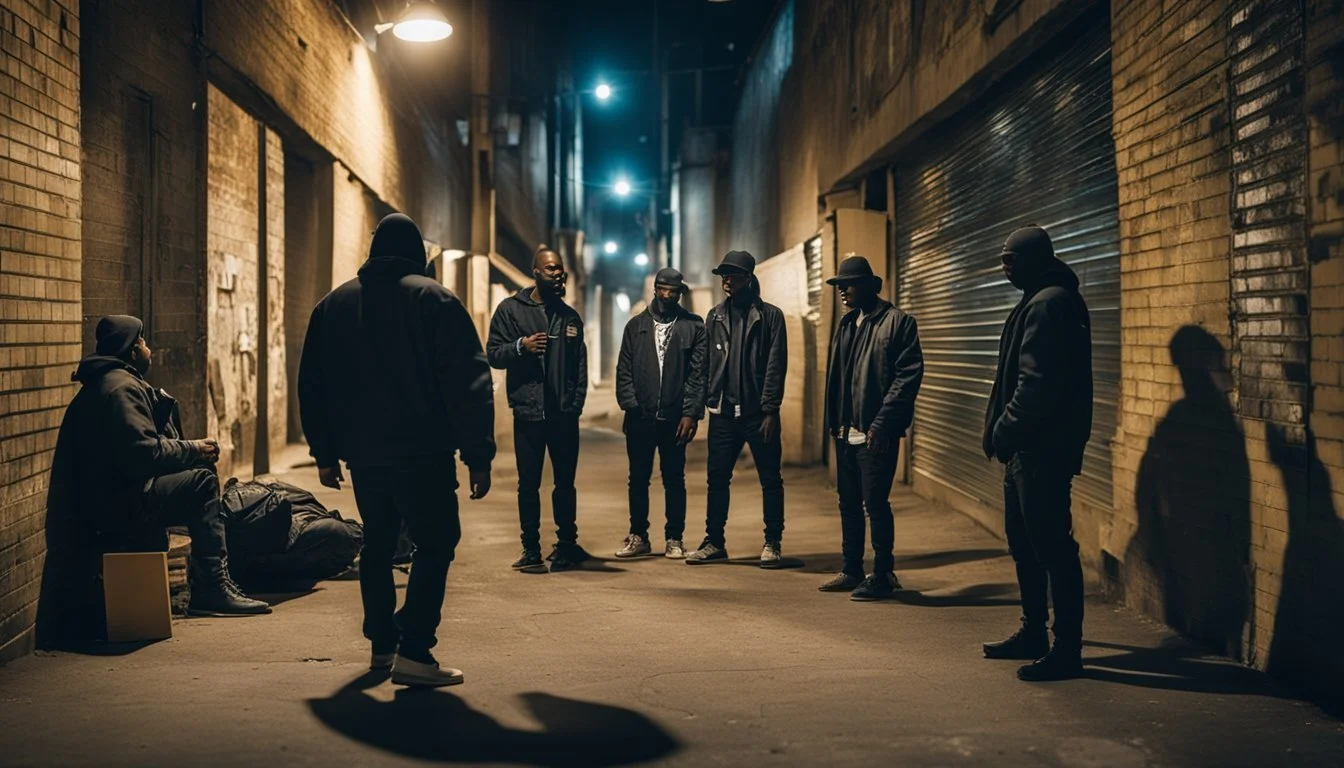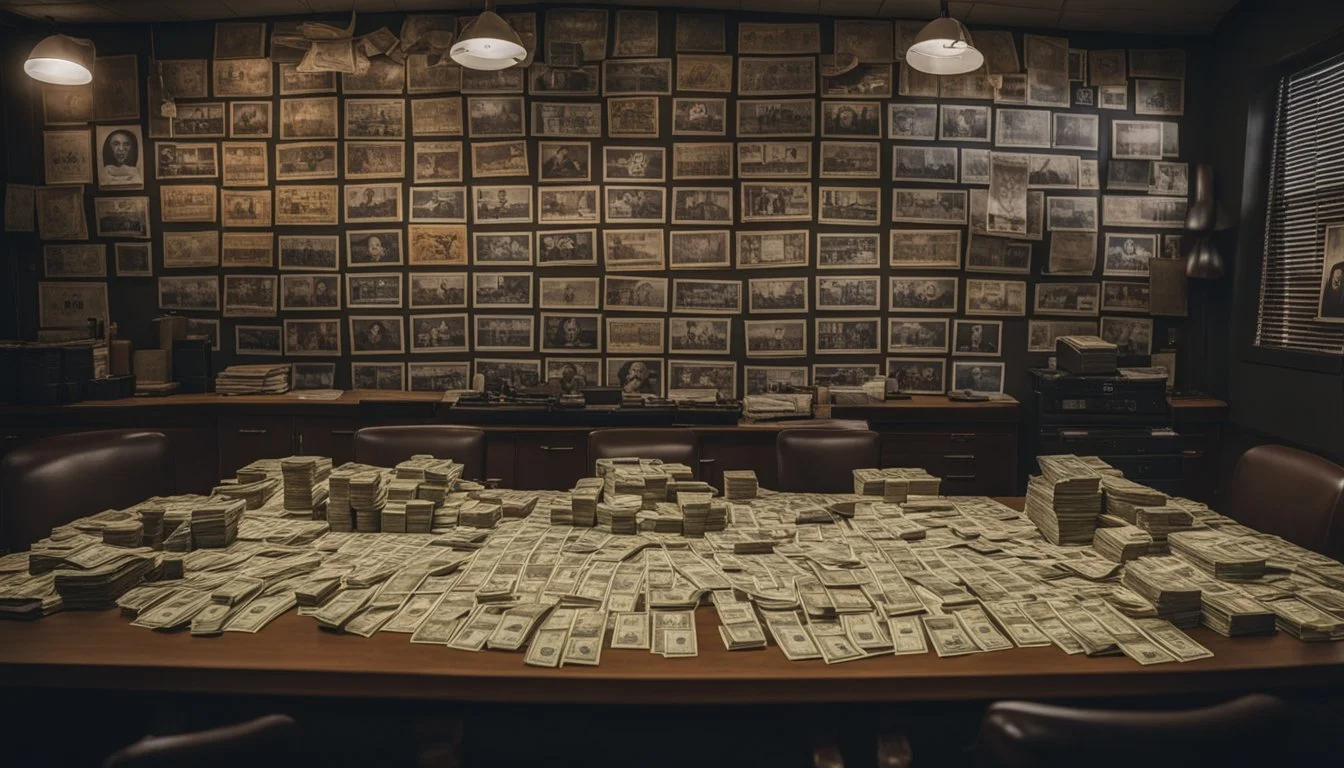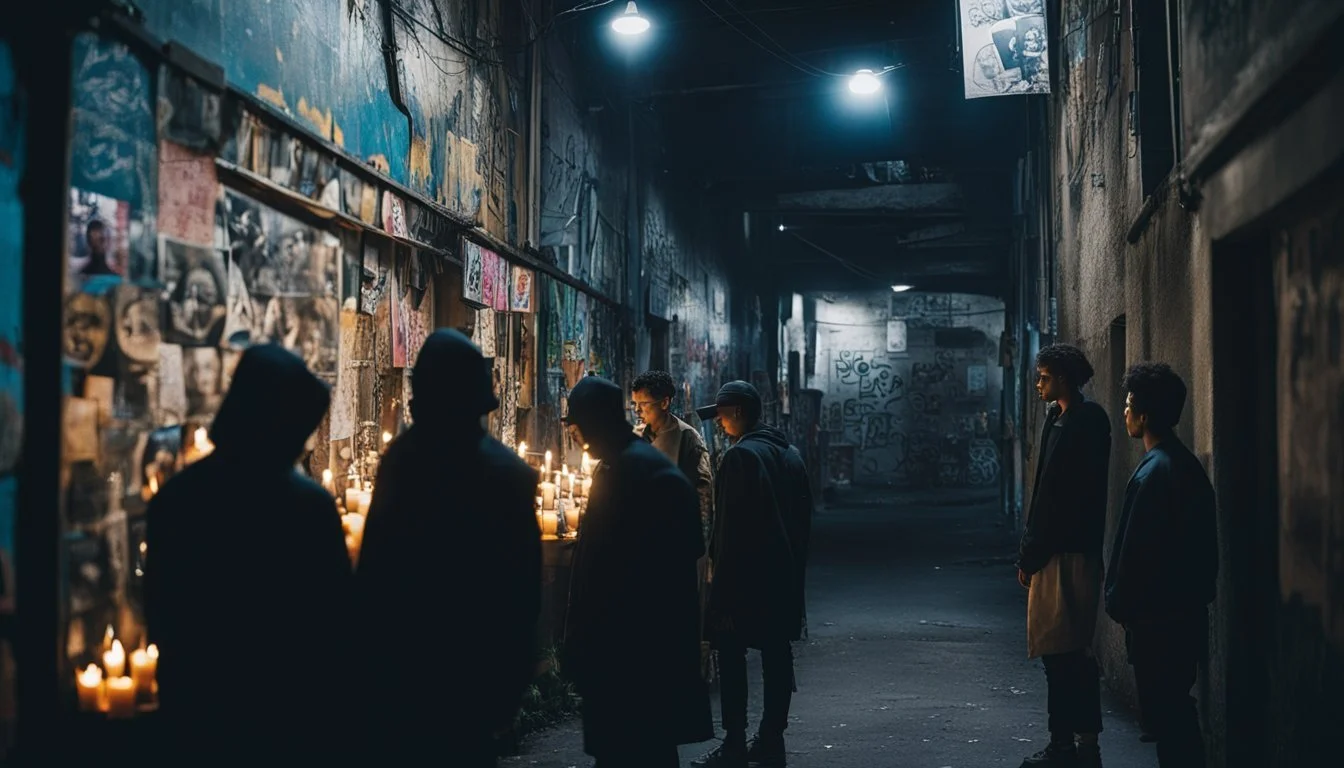7 True Crime Documentaries About Gang Members
Riveting Tales of Real-Life Underworld
Exploring the world of true crime documentaries about gang members offers a gripping look into the lives of individuals entangled in violent and illegal activities. These documentaries dive into the motives, struggles, and consequences faced by gang members, providing a raw and unfiltered perspective on their daily existence. Audiences gain a deeper understanding of the complex social and economic factors that drive individuals into gang life, and the impact of such affiliations on communities.
These films often highlight the narratives of both the perpetrators and the victims, presenting a balanced view of the multifaceted issue. Through powerful storytelling and in-depth interviews, viewers can witness firsthand the harsh realities of gang rivalry, law enforcement efforts, and the personal stories behind the headlines.
1) Street Gang: How We Got to Sesame Street (2021)
"Street Gang: How We Got to Sesame Street" is not your typical crime documentary but a deep dive into the origins of the beloved children's show, Sesame Street.
Directed by Marilyn Agrelo, the film is based on Michael Davis's non-fiction book, Street Gang.
It features interviews with key figures behind the show, including creators Joan Ganz Cooney and Lloyd Morrisett.
The documentary provides a rare glimpse into the early days of Sesame Street, capturing the efforts of the writers, actors, and artists who brought the show to life.
The film focuses primarily on the first two decades, showcasing how Sesame Street became an influential platform in children's television.
For more information, visit the Wikipedia page.
2) Inside the Bloods and Crips: American Gang War
The documentary "Crips and Bloods: Made in America" (2008) provides a deep look into the violent rivalry between the Crips and the Bloods. This film explores the historical and social conditions that fueled the formation of these gangs in Southern California. It examines the lasting impact on the communities involved.
Throughout the documentary, viewers gain insight into the lives of members of the Crips and Bloods. Interviews with former gang members reveal the personal experiences and struggles that led them to join these groups.
The film also sheds light on the broader issues of systemic racism and economic disparity. It argues that these factors have played a significant role in perpetuating the cycle of violence and gang involvement.
In exploring the 40-year feud, "Crips and Bloods: Made in America" highlights the human cost of gang warfare. Over 15,000 lives have been lost due to this conflict, a staggering statistic that underscores the urgency of addressing the root causes of gang violence.
For more information on "Crips and Bloods: Made in America" (2008), visit IMDb.
3) Criminal Empire for Dummies
Criminal Empire for Dummies (2018) provides an enlightening look into the workings of organized crime.
The documentary uses real-life case studies to illustrate the principles and strategies that criminal empires follow. Viewers learn how these organizations manage operations, maintain secrecy, and deal with law enforcement.
Experts in the field break down how crime families structure themselves. Hierarchies are crucial, with clear roles from top bosses to low-level associates. Each level has distinct responsibilities, ensuring the organization's functionality and security.
The film also explores tactics used to launder money and evade police detection. It covers everything from offshore accounts to front businesses. This provides a grounded understanding of the financial complexities involved in criminal activities.
Audience members gain insight into the personal lives of those within the underworld. Stories of loyalty, betrayal, and survival are common. These personal narratives add depth and humanize the often vilified figures of organized crime.
For more on Criminal Empire for Dummies, learn more on IMDb.
4) Narco Cultura (2013)
"Narco Cultura" delves into the violent world of narcocorridos, a musical genre glorifying the lifestyle of drug traffickers. Directed by Shaul Schwarz, this documentary offers a raw look at how this music becomes a part of everyday life in cities plagued by drug violence.
Set against the backdrop of Mexico's drug war, "Narco Cultura" contrasts the lives of those immortalized in the songs with the brutal reality on the streets. It highlights the impact of this music on young audiences, shaping their views on crime and heroism.
The film features interviews with musicians and law enforcement officers, showcasing different perspectives on the narcocorrido phenomenon. Audiences get a sense of the cultural tug-of-war, where music serves as both an outlet for expression and a troubling influence.
By capturing both the allure and the dangers of narcocorridos, "Narco Cultura" offers an unfiltered view into a subculture that celebrates criminality. It poses important questions about the interplay between art, identity, and violence.
For more information, visit IMDB.
5) Gangland Undercover (2015-2016)
Gangland Undercover is a Canadian-American factual drama television series. It is based on the real-life story of Charles Falco, a former ATF confidential informant. Falco infiltrated several of America’s most notorious outlaw motorcycle gangs.
The series provides a gritty look into the dangerous world of biker gangs. Falco, initially a drug dealer, was given a choice: serve a long prison sentence or go undercover.
He chose the latter and spent three years gathering intelligence inside the Vagos, Mongols, and Outlaws motorcycle clubs.
Throughout the series, viewers witness the extent of Falco's infiltration. He risked his life to document illegal activities within these gangs, helping to bring criminals to justice. The show is based on his memoir, "Vagos, Mongols, and Outlaws: My Infiltration of America’s Deadliest Biker Gangs."
The show aired for two seasons and delves deeply into Falco's experiences and the challenges he faced.
Link for more information: IMDB
6) World's Most Dangerous Gang
The documentary "The World's Most Dangerous Gang" focuses on the notorious street gang MS-13. This gang originated in Los Angeles and later expanded its influence internationally, especially in Central America.
This documentary investigates the gang's violent activities. It uncovers its roots, recruitment methods, and the impact on communities.
The film promises a harrowing look into the lives affected by MS-13. Through personal stories and expert analysis, it illustrates the far-reaching consequences of gang affiliation.
More information about this film can be found here.
7) Gangster Empire: Rise of the Mob (2013)
Gangster Empire: Rise of the Mob explores the intricate world of organized crime during the Prohibition era.
This mini-series dives into the violent and corrupt activities that shaped the history of the Mob.
The show features key figures like Al Capone and highlights the influence of the Italian Mob across cities like New York, Chicago, and Las Vegas.
The series not only covers the rise of these criminal empires but also examines the codes of conduct that gangsters lived by.
Episodes delve into the roots of organized crime from the American Revolution up to the prohibition of alcohol, offering a historical perspective on the development of gangster culture.
For more information on Gangster Empire: Rise of the Mob, see IMDb.
The Evolution of Gang-Related Crimes
Gang-related crimes have transformed significantly over the decades, evolving in methods, motivation, and impact. This section explores the historical context of these changes and highlights the influence of key figures in the underworld.
Historical Overview
In the early 20th century, gang-related crimes were primarily associated with bootlegging and illegal gambling. The Prohibition era marked a significant rise in organized crime, with gangs like Al Capone's syndicate dominating the scene.
By the mid-20th century, gangs in urban areas, notably in Los Angeles and New York, began shifting their focus to drug trafficking. The 1980s crack epidemic further fueled the growth of street gangs.
Modern gang-related crimes involve sophisticated cyber crimes, human trafficking, and international drug trades. The integration of technology has allowed gangs to operate more covertly and efficiently, making law enforcement’s job increasingly complicated.
Notable Gang Members and Their Impact
Al Capone: Known as "Scarface," Al Capone's operations during the Prohibition era set the framework for modern organized crime. His control over Chicago’s bootlegging industry showcased how lucrative and powerful gang operations could be.
John Gotti: As the head of the Gambino crime family, Gotti's influence extended through the 1980s and '90s. His high-profile trials and the eventual downfall epitomized the media's interest in mafia operations.
MS-13 Leaders: Originating in Los Angeles, MS-13 has become one of the most feared gangs globally. Their brutal tactics and transnational presence underline the pervasive impact of gangs beyond local communities.
These figures illustrate how individuals can shape and define the operations and public perceptions of gang-related activities, influencing everything from street-level crimes to international criminal enterprises.
Psychological and Social Factors
Understanding the reasons behind gang membership and how media representation affects society is crucial when examining crime documentaries about gang members. These aspects shed light on both individual motivations and broader societal influences.
Motivations Behind Gang Membership
Gang membership often stems from various psychological needs and social influences. Many individuals join gangs for a sense of belonging and identity. These groups offer stability and support, which may be lacking in the member's personal life.
Economic factors also play a significant role. In areas with limited legitimate employment opportunities, joining a gang can appear as a viable means to financial stability.
Adolescents are particularly vulnerable due to peer pressure. They may feel compelled to join gangs to gain social status or protection in their communities.
Societal Influence and Media Representation
Media portrayal of gangs can shape public perception and opinions. Documentaries and news coverage often highlight the most violent and sensational aspects, potentially skewing the reality.
Such media representation can create stereotypes, leading to stigmatization of certain communities. This can affect policy-making and societal attitudes, sometimes exacerbating the problems associated with gang violence.
Conversely, some documentaries strive for a balanced view, providing insights into the socio-economic conditions that foster gang culture. This perspective can promote understanding and drive positive social change.
Impact on Communities
The role of gang members in true crime documentaries extends beyond individual stories to broader societal effects. These narratives reveal significant implications on both crime rates and the community's responses to the challenges posed by gang activities.
Crime Rates and Public Safety
Gang-related activities often result in increased crime rates within affected communities. These crimes vary from violent offenses like assaults and homicides to non-violent ones such as drug trafficking and vandalism. The presence of gangs can instill fear among residents, discouraging public cooperation with law enforcement and making it harder to maintain peace and safety.
Some communities experience spikes in youth involvement in crime due to gang recruitment. This perpetuates a cycle of violence that can be difficult to break.
Public safety measures frequently need to be intensified, requiring more resources from local authorities. More significant police presence, community watch programs, and crime prevention strategies are often implemented.
Community Responses and Rehabilitation
Communities often respond to gang presence through a mix of prevention and rehabilitation initiatives. Programs aimed at youth engagement and education play a crucial role in deterring gang involvement. Local organizations work to provide safe spaces and activities to keep at-risk youth occupied and away from gang influence.
Rehabilitation efforts are crucial for those wishing to leave gang life behind. Support services, including job training and mental health counseling, help former gang members reintegrate into society.
Community policing and efforts to build trust between law enforcement and residents are vital. These actions foster cooperation, encourage reporting of crimes, and help reduce the overall influence of gangs. Through collective efforts, communities can mitigate the harmful impacts of gangs and work towards safer environments.







